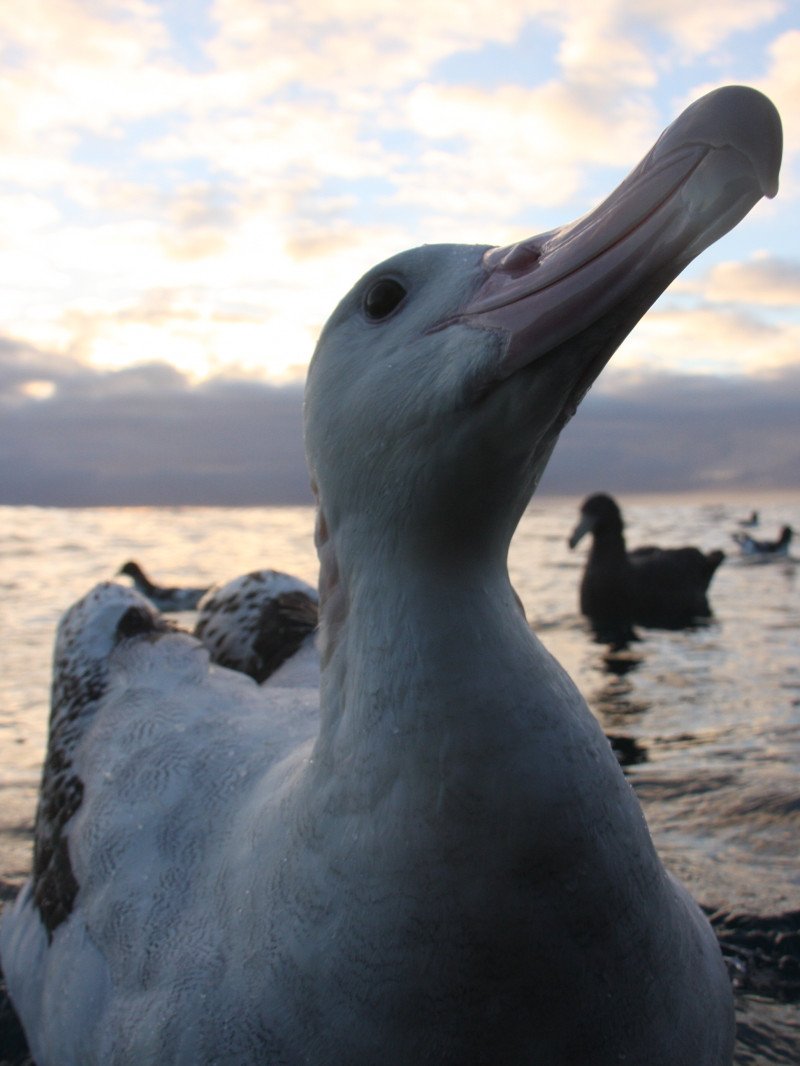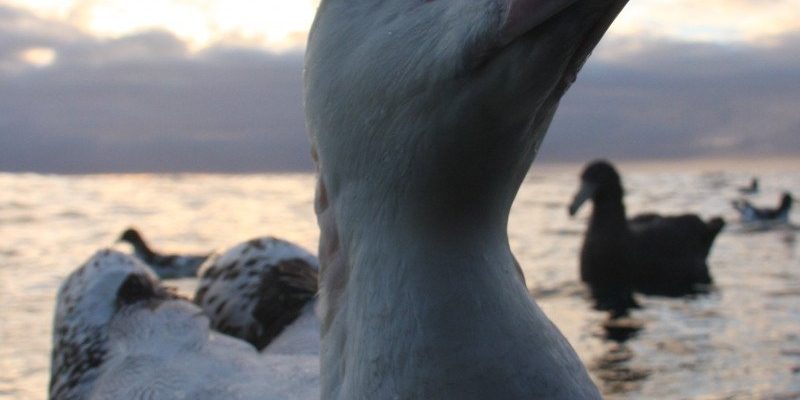
Understanding how to interact with wildlife is crucial not just for your experience but also for the well-being of the animals. Albatrosses are often found in remote areas, flying over oceans, nesting on isolated islands, and sometimes resting on boats. Their natural habitats are precious ecosystems that deserve protection. So, let’s dive into what you should do if you encounter one of these extraordinary birds in the wild!
Recognizing an Albatross
Before you can appreciate an albatross, you need to know what one looks like. These birds are famous for their long, slender wings, which can stretch up to 12 feet across. Imagine standing next to a small car. That’s about the span you’re looking at! Their bodies are generally white or light-colored, with darker patches on the wings, depending on the species. There are around 21 different types of albatrosses, but many share similar features.
When you spot an albatross, take a moment to observe its behavior. Are they gliding gracefully, or are they flapping their wings vigorously? Albatrosses are masterful flyers, often riding the wind currents without much effort. This behavior not only fascinates bird watchers but also plays a vital role in their ability to cover vast distances over open oceans.
Understanding the difference between various species can enhance your experience. For example, the Wandering Albatross is known for its huge wingspan, while the Black-browed Albatross has a distinctive dark line over its eyes. Recognizing these subtle differences can make your encounter even more memorable.
Keeping a Safe Distance
Here’s the thing: while it’s exciting to see an albatross, it’s essential to maintain a respectful distance. Approaching too closely can stress these birds, disrupting their natural behavior. Albatrosses can be sensitive to human presence, especially during nesting season. It’s best to observe them from afar, using binoculars or a camera with a zoom lens.
A good rule of thumb is to stay at least 100 feet away. This distance allows you to enjoy the sight without jeopardizing the bird’s comfort. If you’re on a boat, navigate slowly and quietly, minimizing noise that could disturb them. If you see an albatross resting or nesting, remember that your presence could interfere with their vital activities, like feeding their young.
In addition, avoid sudden movements or loud noises. Albatrosses may perceive these as threats. So, when you do see one, take a deep breath, relax, and enjoy the moment as quietly as possible.
What to Do If You’re Close
Sometimes, despite your best efforts, you might find yourself closer to an albatross than you intended. If that happens, stay calm. Here are a few steps to follow:
- Avoid sudden movements: Quick motions might startle the bird and cause it to fly away.
- Limit your noise: Speak softly or remain silent to avoid disturbing the bird.
- Observe and appreciate: Use this opportunity to watch the albatross’s behavior. Take notes or sketches if you can!
You might wonder why staying calm is so essential. Albatrosses can become distressed, possibly abandoning their nests or young if they feel threatened. Your goal should be to witness their beauty without intruding on their space.
If the albatross seems agitated, back away slowly to give it room. It’s always better for the well-being of the bird, and you’ll leave with a memorable encounter instead of a stressful one.
Understanding Their Behavior
Albatrosses have fascinating habits and behaviors that make them unique. They are social birds, often seen gathering in groups called colonies. Watching them interact adds another layer to your encounter. You might see them engaging in courtship displays or feeding together, which can be a delightful sight.
If you observe an albatross diving or soaring, it’s showcasing its hunting skills. These birds can spot fish from high above and dive to catch their prey with remarkable precision. If you’re lucky enough to witness this, you’ll realize just how skilled these birds are at surviving in the wild.
Another interesting behavior is their nesting rituals. Albatrosses typically mate for life, and their courtship involves impressive aerial displays. If you see paired albatrosses, take note of their interactions. It’s a beautiful reminder of the bonds formed in nature, and you’re witnessing a significant moment in their lives.
Photography Tips for Your Encounter
Capturing the beauty of an albatross in its natural habitat can be thrilling. If you’re keen on photography, here are some tips to consider:
- Use a zoom lens: Getting close isn’t always necessary. A good zoom lens helps you capture sharp images from a distance.
- Pay attention to lighting: Early morning or late afternoon light is softer and more flattering for photography.
- Focus on their behavior: Capture moments that show their unique actions, like flying, diving, or nesting.
Photography can enhance your experience and help you remember these magical moments. Just be sure to follow the earlier guidelines about distance and noise to ensure the birds are comfortable.
Conservation: Protecting Albatrosses
Albatrosses are incredible creatures facing various threats, including habitat loss and climate change. When you encounter one, you’re not just seeing a bird; you’re witnessing a species that plays a crucial role in its ecosystem. Understanding the importance of conservation can enrich your experience and inspire you to take action.
You might wonder how you can help. Supporting organizations that work to protect marine life and their habitats is a great start. Educating yourself and others about these birds helps raise awareness of their struggles. Every little bit counts, whether it’s sharing what you’ve learned or participating in conservation efforts.
Should you ever find yourself in a position to report illegal hunting or habitat destruction, don’t hesitate. Being a voice for these majestic birds can make a difference, ensuring future generations get to experience the wonder of albatrosses.
Enjoying the Moment
Finally, don’t forget to take a moment for yourself. Encountering an albatross is special, and it’s easy to get caught up in trying to capture the perfect photo or note every detail. Instead, take a deep breath and appreciate the experience. Let the beauty of this magnificent bird wash over you.
You may feel a sense of connection to nature that’s hard to describe—a reminder of the vast world we share with other creatures. These moments can bring joy and perspective, so cherish them.
In conclusion, if you encounter an albatross in the wild, remember to appreciate it from a distance, understand its behavior, and capture the moment thoughtfully. Your experience not only enriches your life but also contributes to the conservation of these remarkable birds. So, whether you’re birdwatching or sailing, keep your eyes peeled for these incredible creatures, and enjoy every second of the experience!

